#email send in java
Explore tagged Tumblr posts
Text
Got stoned and decided to play minecraft for the first time since last year, and the Byzantine hell it put me through.
First it made me migrate to a Microsoft account. No problem, right? I go through the steps and everything seems like it's working until the page where it asks you to log into Microsoft. I use the email and password for my Mojang account and it keeps saying it's incorrect, and click "Forgot my password". Apparently I already had a Microsoft account associated with this email, probably from when I first got my computer. I go to reset the password and...
It tells ne that my email account is no longer accessible. "You've lost access to your email." I do some googling, and find out that if you don't log into your Microsoft account for two years, it can be rendered inactive and the email address forbidden from being reused. (Probably to prevent scammers reusing people's email addresses?) It tells me I have to either create a new email account or use an alternate one.
Keep in mind I am high at the time.
Luckily I have another email address, so I switch the account to that one and send the password reset link there. I click it, choose a new password, and go to log into Minecraft.
The screen greets me with "Welcome, Mrs nL PacMan X!"
That is not and has never been my username. It gave me a new Xbox Live account (I don't play Xbox) with a randomly-generated username. I change it to something I prefer (and the page has the audacity to tell me "you get one free gamertag change, after that you're gonna have to pay for it") and launch Minecraft, and the home screen is telling me "Buy Java & Bedrock Combined Edition!"
Having no interest in buying a bundle consisting of the version I already have plus a version I don't even want, I look around the screen and find no obvious play button, just "Buy Now!" Turns out you have to go to the Installations tab (rather than the obvious choice of the Play tab) and click Play on the version you already have installed.
Migrate to a Microsoft account, it's easy!
#minecraft#complaining#long post#weed mention#i can feel it starting to wear off and i still haven't gotten to play any minecraft
8 notes
·
View notes
Text
Okay so this is gonna be a big rant. I didn't check my sources, I'm going to say things that are wrong. You're going to have to live with it.
Around the time of windows 8 Microsoft tried to reinvent itself. It was tired of being the stuffy, skeuomorphic machine you were assigned at work. They wanted to be cool. Part of this vision was a complete redesign of the interface
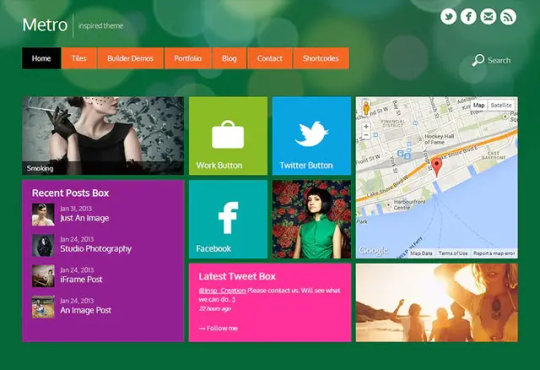
And I don't know, call me crazy, I think this visual design fucks. I mean look at this. It's simplistic but gorgeous. The rest of the industry was running away from skeuomorphism towards simplicity via rounded bulbous corners. This was distinct, it was colorful, it had contrast, it was sharp. It literally looked like a bunch of windows in a pane.
At the time, Microsoft was also launching a windows phone (much to late to make a difference. They missed the boat but they didn't know it yet) and were designing a new Xbox that would have architecture near identical to that of a PC. The idea was that they were expanding beyond just stuffy PCs, there were a lot of new product categories and they wanted a universal version of windows that could handle all of them. You could build a "Universal Windows Platform" app that would run on any version of windows on any device. This was achieved using the C# virtual machine that us CS people tentatively affectionately call "Microsoft Java".
The future that Microsoft envisioned would be that there would be a new walled garden of software that you would run on all your pretty new windows devices. They would all share and sync and be perfect and pretty, and the same app on your phone could be played on your xbox, pc, and holy shit AR GOGGLES?

Yeah these fucking things. Microsoft bet big on the idea we'd like to start doing shit with holograms. They made this cool-ass device that used projectors to shine shit into your eye so you could see holograms and poke them and move them about. These were Windows devices that ran actual full-on windows, but that meant that Windows' identity had to grow to accommodate them. All the UIs had to work in a world where you'd see them on a touch screen OR as a hologram. All of the first party software had to have that in mind.
MS paint? Nah that shit's ancient. We got PAINT 3D and it's the most dogshit thing you've ever used
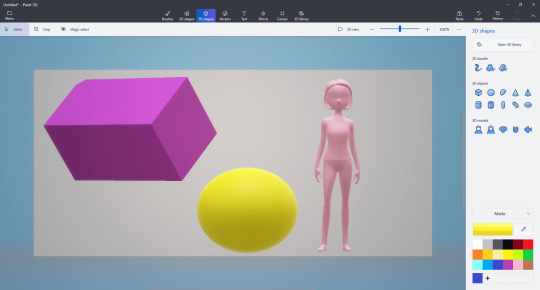
All the sloppy jank of MS paint but now you can put horrible fucking 3d models in it. I'm holding back my full Paint 3d thoughts for a later post that's still being worked on in the drafts, but here's a sneak preview.
Paint 3d allows you to dip into a catalogue of 3d models and plop them into your regular MS paint canvas. There's still no layers, no vector support, but hey at least you can add transparent backgrounds. Paint 3d let you export your horrible janky creations both as a regular png/jpg but also as a 3d model.
that's your short answer. They added that 3d models folder because of paint 3d. If you want to leave now you can... but this post keeps going as you can see.
The idea would be that as more of our tech moved to AR and VR you would be acquiring 3d models at a similar rate that you do other file times, so it made sense to have a built in folder. Maybe you work at one of those offices in an microsoft ad where I guess people just email each other .fbx flower pots for some fucking reason? Maybe you're downloading them from the metaverse (we weren't calling it that back then).
Your friend using a hololense would make a 3d model and then send it to you, you'd add some shit to it in paint 3d using its kafkaesque interface, then send it back. Wow. The future is so much fun.

You could even stick your 3d models in your very own VR start menu. Yeah. To go along with the AR goggles they released some dogshit (well they were good for the time and also cheap compared to the competition) VR goggles. These things ran on the SAME uwp platform as everything else, so theoretically I could make some abomination in paint 3d and then send it to my dad who works at the flower pot factory or some shit and he could put it on his virtual desk in his virtual cliff house start menu where he would virtually alt tab between a hovering window of Microsoft word and some freaky VR porn that his boss couldn't catch him watching because it was all in the headset.
That didn't fucking happen. We don't do that. And it's not just because it was a terrible idea but also because Microsoft wasn't committed to the bit.
See this house of cards came crashing down for a lot of reasons. The first one being that it wasn't backwards compatible. This cool 3d virtual, cross-device future wasn't with the win32 api, but the new UWP api. Devs had to remake their software in a less performant programming language and format just so it would run on all windows devices... but windows for PC still ran the win32 style apps that already worked. So you were expecting devs to port their windows app to... to windows... so it could run on windows... even though it was already running on windows. Oh yeah, let's just rewrite our whole accounting software stack so that bill can use it on his windows phone because phones are definitely for doing accounting and not playing fucking candy crush.
xkcd 927

UWP added the functionality of "It works on xboxes, vr googles, windows phones, AND computers but just a little bit worse than the other ones and you have to remake it from scratch". It was just one more competing standard, and the use case of cross platform didn't really help that much.
The windows phone died out early on because it was too late and it couldn't cross the app gap (even though it's UI totally fucked and you play a halo twin stick shooter on it). The hololense died because it cost them ONE THOUSAND dollars just to build the screen assembly for one eye, you needed two of those + an onboard computer to run AR + a fuckload of cameras + proffit. No one was ever going to spend that kinda of cash just so they could pinch and zoom semi transparent holograms in a tiny 40 degree feild of vision in for two and a half hours because yeah the battery life was shit too. Developers never made software for it because there would never be any install base because something that superfluous can't ever be that expensive while we're all getting poorer.
Now, the VR headsets on the other hand, they kinda sucked... but they were cheap and they were competent. With a bit of elbow grease you could make them be just as good as the pretty boys, and they were the first to market with inside out tracking which was legitimately freeing back in 2018. Microsoft could have integrated it with the Xbox to compete with PSV but they just didn't for no fucking reason even though they both ran UWP apps and were on the same appstore and used all the same ports and the Xbox was just about powerful enough to play some games in VR. Yeah they just didn't commit to the bit and abandoned their VR headset line because it didn't instantly become a monopoly despite them putting very little effort into it.
So windows phone died, windows VR died, hololense died, and now regular windows 10 is full of the corpses of this cross platform vision. We have the 3d objects folder even though nothing really uses it anymore. Windows 10 never fully upgraded to the metro theme. It's like... half metro but some settings require you go to the old XP control panel. Some windows are in metro style but then when you right click on them there's just a standard win32 dialogue box that's ugly and white. It's been that way since 2015 and rather than finishing windows 10 and making it pretty they stuffed it full of bullshit and ads and then said "FUCK IT, WINDOWS 11"
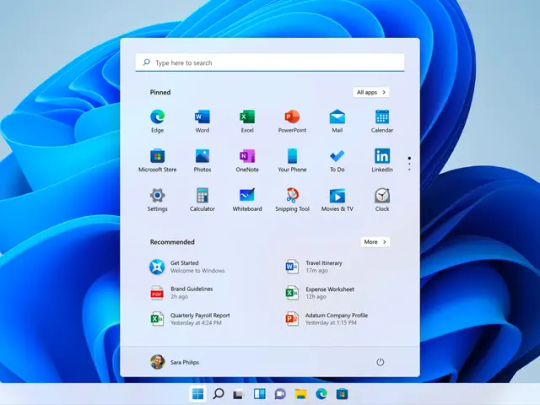
And windows 11's whole thing is being ugly and simplistic and rounded corners and wasted space and designed for a touch screen because even though the windows phone died at least the 2 in one windows tablet market was doing okay.
Windows is a collection of good ideas, followed by a bag fumble, followed by an admission of defeat and a retreat to the familiar.
And somewhere along the way we got a new folder for 3d objects, and if you really want you can use paint 3d to make this shit I guess:




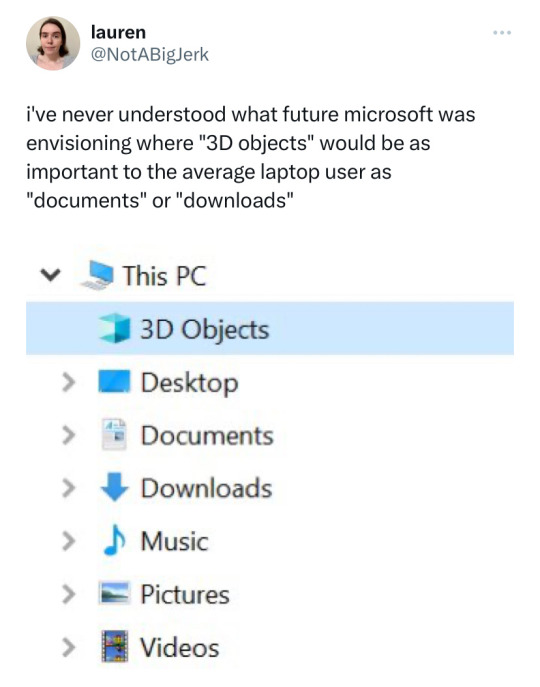
#Quohotos' unhinged rants that no one asked for#Microsoft#Windows#paint3d#paint 3d#rant#UX design#UX#interface design#graphic design
108K notes
·
View notes
Text
Why Developers and Marketers Love Direct Mail APIs for Campaign Automation
In an age dominated by digital noise, direct mail marketing has made a powerful comeback—this time fueled by technology. Developers and marketers are increasingly turning to Direct Mail APIs to automate personalized, data-driven physical mail campaigns. These APIs bridge the gap between digital interfaces and physical customer engagement, making offline outreach as measurable and scalable as online marketing.

This article explores why marketers are adopting direct mail APIs, their benefits, use cases, and how these tools redefine campaign automation for ROI-focused teams.
What is a Direct Mail API?
A Direct Mail API (Application Programming Interface) is a digital interface that enables developers to programmatically send physical mail—such as letters, postcards, brochures, and catalogs—via third-party mailing services. These APIs integrate with CRM systems, marketing automation platforms, and eCommerce platforms to streamline offline customer communication workflows.
Why Developers Love Direct Mail APIs
1. Easy Integration with Tech Stacks
Developers appreciate APIs that integrate seamlessly with modern SaaS tools like Salesforce, HubSpot, Shopify, and Zapier. Most direct mail APIs offer RESTful architecture with SDKs for languages like Python, PHP, Java, and Node.js.
2. Scalability for High-Volume Campaigns
With direct mail APIs, developers can automate batch sending of thousands of personalized letters or postcards in a single call. This scalability is invaluable for large enterprises managing multi-region campaigns.
3. Workflow Automation
Developers use direct mail APIs to set event-based triggers—such as cart abandonment, renewal reminders, or subscription milestones—to dispatch personalized physical mail without human intervention.
4. Error Handling and Webhooks
Modern APIs support advanced features like webhooks for delivery status, error handling, tracking, and debugging. This allows developers to create resilient workflows with full visibility into the mail lifecycle.
Why Marketers Love Direct Mail APIs
1. Campaign Personalization at Scale
Marketers can personalize content, images, and offers based on CRM data—similar to email marketing but through a tangible medium. APIs allow for variable data printing, making each piece of mail unique.
2. Multichannel Marketing Integration
Direct mail can now be part of a unified omnichannel strategy. APIs make it easy to trigger a postcard after a user opens an email, clicks an ad, or visits a store.
3. Enhanced Tracking and ROI Attribution
APIs allow marketers to track direct mail effectiveness via UTM links, QR codes, PURLs (Personalized URLs), and call tracking. When paired with analytics tools, it provides measurable ROI data.
4. A/B Testing and Optimization
Thanks to APIs, A/B testing of creative elements and offers in direct mail is now possible, just like in digital campaigns. Marketers can analyze engagement metrics and iterate campaigns based on real-world responses.
Use Cases of Direct Mail APIs
E-Commerce: Sending automated thank-you cards, reactivation offers, and abandoned cart reminders.
Financial Services: Dispatching compliance letters, account statements, and loan approval notices.
Healthcare: Mailing HIPAA-compliant appointment reminders, test results, and wellness tips.
SaaS: Re-engaging dormant users with custom postcards and win-back offers.
Education: Sending enrollment letters, alumni newsletters, and fundraising appeals.
Security and Compliance Benefits
Reputable Direct Mail APIs are GDPR, HIPAA, and SOC 2 compliant. For developers handling sensitive data, this ensures legal and ethical handling of personal information.
Top Direct Mail API Providers
Lob
PostGrid
Click2Mail
Postalytics
Sendoso
Each of these providers offers comprehensive documentation, sandbox environments, and real-time tracking capabilities, making them ideal for modern development and marketing teams.
Conclusion
Developers love Direct Mail APIs for their programmability, reliability, and scalability. Marketers love them for personalization, ROI attribution, and omnichannel strategy execution. Together, they create a synergy that elevates traditional direct mail into a dynamic, data-driven marketing tool.
Whether you're building high-volume campaigns or refining customer journeys, direct mail APIs offer a competitive edge in an increasingly crowded digital world.
youtube
SITES WE SUPPORT
Automated Mailing APIs – Wix
1 note
·
View note
Text
For a small business, money is in short supply. When you want to invest in software, you do not want to spend too much on those that will not have a significant ROI. Fortunately, there are several software you can use for free to optimize your business processes. Here are some of the best free tools in the market today. 1. Wix Website Builder Your business needs a website. Aside from your store, this is fertile ground for new clients, increased visibility, credibility, and cheap advertising. A free website builder such as Wix can give you a free account. Your role will be to focus on producing UI and UX designs for the site. Database administration and development courses offer training and skills in this area as well as Java, HTML, and coding competencies. As your business grows, though you might hire a website developer along the way, you will be equipped to contribute and steer your website’s direction. 2. Virtual Private Network CyberGhost provides a Virtual Private Network service (VPN) to aid in security. 88% of businesses in the UK suffered a cyber-attack in the last 12 months. This emphasizes the need to have a security system. Consequently, as your business grows, so will your security needs. VPN services can conceal your online activity and limit access to network content. CyberGhost offers good protection, a reliable connection, and is on OSes, which is a modern operating system. 3. Wrike Project Management The free version supports a maximum of five users, with no limit on collaborators. It also offers your business 2GB of storage. Also, it allows you to monitor group activities, share files, and manage tasks with ease. 4. Video Conferencing By join.me It’s been estimated that 50% of the workforce in the UK will be working remotely by 2020. For a business, this creates the need for a reliable collaboration tool. Join.me is one such tool, allowing up to 10 video call participants, live video feeds as well as screen sharing. 5. Hootsuite Social Media Listening Tool In this day and age, you cannot ignore social media listening. This is how you know what is being said about you and your competitors as well. For a small business that’s not yet ready to hire social media strategists or mega listening platforms, Hootsuite fills this gap. With its free version, you can manage several social networks, interact with followers as well as schedule posts. 6. MailChimp’s Forever Free Plan This is an excellent free emailing service. It’s offered to businesses sending out fewer than 12,000 emails to 2,000 subscribers per month. The deal allows you to use built-in sign-up forms to get subscribers from the web. The software also helps you design messages for your audience. 7. Zoho Docs Document Management This is an ideal solution for small businesses with light document loads. The free plan is available to 25 users, who get 5 GB of storage each. Further, you get unlimited file sharing, in-app chat for collaboration as well as the capacity to integrate to Dropbox. 8. SurveyGizmo Online Survey The surest way to get real feedback from your customers is through surveys. Asking your customers for feedback also makes your customers see you as a concerned business. SurveyGizmo allows you to manage a limitless number of surveys, questions, and responses. 9. Apptivo CRM While most tools for CRM are costly, complicated affairs, Apptivo CRM gives you a free starter software. It comes with 500 GB of data, detailed reporting, and some project management tools. For a small business, this is an advantage in that it helps you better understand the system and its limitations. When you do go for a premium service, you are better prepared at recognizing your business needs and the customizable options you will need. For a small business, the goal of taking up free services is to test the waters and see what brings value and what does not, before making expensive purchases. For this reason, the free services only offer limited features.
0 notes
Text
API Integration: The Ultimate 2025 Guide to Connecting Your Digital World

Introduction to API Integration
The digital ecosystem in 2025 is more interconnected than ever. Whether it's mobile apps, websites, or cloud services, everything needs to talk to everything else. That’s where API integration becomes the hero behind the scenes. If you're running an e-commerce store, a SaaS platform, or even a blog, chances are you’re already using multiple APIs without even realizing it.
But what is API integration exactly, and why is it so crucial for businesses and developers today? In this in-depth guide, we’ll explore everything from the basics to the technicals, tools, benefits, reviews, and frequently asked questions.
What is API Integration?
API integration is the process of connecting two or more applications through their APIs (Application Programming Interfaces) to let them exchange data and perform functions automatically.
🧠 In Simple Terms:
Imagine your website needs to process payments using PayPal. Instead of building a payment system from scratch, you simply integrate PayPal’s API—and voilà, you’re accepting payments within minutes.
Why is API Integration Important in 2025?
From automation to improved user experience, here are the key reasons businesses rely on API integration:
🚀 Automation – Eliminate manual processes like order fulfillment, data entry, or email follow-ups.
🌍 Connectivity – Seamlessly connect CRMs, ERPs, and third-party tools.
⏱️ Efficiency – Save time and resources by reducing repetitive tasks.
📈 Scalability – Quickly add new features or platforms without starting from scratch.
💡 Innovation – Enables rapid innovation using third-party services (AI, analytics, etc.).
Types of API Integrations
Third-Party Integrations
Example: Adding Google Maps or Stripe to your site.
Custom API Integrations
Built in-house to connect proprietary systems.
Webhooks
Push updates in real-time (e.g., Slack notifications).
Middleware Platforms
Tools like Zapier or Integromat that connect multiple services.
Popular API Integration Examples
API TypeReal-World Use CasePayment APIStripe, PayPal, RazorpayEmail APIMailchimp, SendGridSocial MediaFacebook Graph API, Twitter APIMaps APIGoogle Maps API for location servicesCRM APISalesforce, HubSpotAI APIOpenAI, IBM Watson
How API Integration Works
Request – Your app sends a request (e.g., "Get user data").
Processing – API server processes it.
Response – API returns the data to your system.
Protocols used:
REST (most common)
SOAP (used in enterprise apps)
GraphQL (used for flexible querying)
Steps to Implement API Integration
1. Identify Your Integration Goals
What do you want to automate or simplify? For example, syncing customer data between Shopify and Mailchimp.
2. Choose the Right API
Select based on reputation, reliability, and documentation.
3. Obtain API Credentials
Most APIs require an API key or OAuth token for authentication.
4. Set Up the Endpoint
Define what data you want to send or receive using the API’s endpoint URL.
5. Write Integration Code
Use programming languages like:
JavaScript (Node.js)
Python
PHP
Java
6. Test Thoroughly
Use tools like Postman or Insomnia to simulate requests and validate responses.
7. Monitor & Maintain
APIs change over time. Monitor your integration for downtime or deprecations.
Best Tools for API Integration
Tool/PlatformPurposePostmanTesting and simulating API callsZapierNo-code API integrationsMake.comWorkflow automationSwaggerAPI design and documentationApigeeAPI management & analytics
Benefits of API Integration
✅ Business Advantages
Improved Workflow Automation
Faster Time to Market
Enhanced Customer Experience
✅ Technical Advantages
Modular Development
Reduced Server Load
Real-time Data Sync
Challenges in API Integration
Despite the advantages, API integration does come with its set of challenges:
⚠️ Security Risks – Improperly secured APIs can lead to data leaks.
🧩 Compatibility Issues – Not all APIs play well together.
🔄 API Deprecations – Providers may change or shut down APIs.
🕵️♂️ Monitoring – Ongoing maintenance is crucial.
Solution: Use API monitoring tools like Runscope, New Relic, or custom logging solutions.
Review: API Integration from a Marketer’s Perspective
As a digital marketing expert at diglip7.com, I’ve implemented dozens of API integrations—from CRMs like HubSpot to eCommerce tools like WooCommerce.
Here’s what I’ve observed:
🌟 Pros:
Saves countless hours by automating marketing emails, leads, and workflows.
Boosts lead conversion with real-time sync between platforms.
Makes campaign reporting more dynamic using analytics APIs.
⚠️ Cons:
Some third-party APIs are poorly documented.
Rate limits can restrict how often data updates.
Needs solid backend support for large-scale integrations.
Final Verdict:
“API integration is the backbone of modern marketing and automation. If your business isn't using APIs, you’re already behind.”
Use Case Scenarios for API Integration in 2025
1. E-Commerce Automation
Sync inventory between Shopify and Amazon.
Automatically send shipping updates via WhatsApp.
2. Lead Generation
Capture leads from Facebook Ads and push them to CRM.
3. AI & Chatbots
Connect AI-powered chatbots with your helpdesk or CRM.
4. Finance
Integrate real-time currency conversion APIs or payment gateways.
Best Practices for API Integration
🔐 Secure your API keys using environment variables.
📖 Read the documentation before starting any integration.
🛠️ Use versioned APIs to avoid breaking updates.
🧪 Always test in sandbox environments first.
📊 Log every request and response for future debugging.
Future of API Integration
By 2027, Gartner predicts that over 65% of digital transformations will depend heavily on APIs. Here’s what’s next:
Hyperautomation via API chaining.
API-as-a-Service will become mainstream.
AI-integrated APIs for intelligent decisions.
Voice-based API interactions for IoT and smart homes.
FAQs About API Integration
Q1: What’s the difference between API development and API integration?
API development involves creating an API.
API integration means connecting existing APIs to your system or software.
Q2: Do I need coding knowledge to use APIs?
Not always. Platforms like Zapier or Make.com allow no-code integrations.
Q3: Is REST or GraphQL better for integration?
REST is widely supported and simpler.
GraphQL is better for complex data requirements and performance.
Q4: How much does API integration cost?
Depends on complexity. Simple integrations can be free (Zapier), while enterprise-level custom integrations can cost thousands.
Q5: Can I integrate multiple APIs at once?
Yes, middleware tools or custom backend services can handle multiple API connections.
Q6: How do I know if an API is reliable?
Check:
Documentation quality
Uptime reports
Community reviews
Rate limits
Conclusion
API integration is no longer just a “developer thing”—it’s a business necessity. In 2025, APIs are the glue binding your digital platforms, services, and tools. Whether you're a marketer, developer, or entrepreneur, mastering API integration will future-proof your operations and accelerate growth.
Want more digital growth strategies, automation tools, and tech tutorials? 👉 Visit diglip7.com — your hub for modern digital marketing solutions.
0 notes
Text
Building Digital Success: How Frontend and Backend Web Development Work Together
In the world of websites and apps, two crucial forces work behind the scenes to create the experiences we enjoy online every day — frontend web development and backend web development. While these terms may sound technical, they form the foundation of every modern digital solution.
At CodePerk Solutions, we specialize in both frontend and backend web development to help businesses thrive in the digital world. Whether you are a startup looking for a sleek website or an enterprise planning to scale your online services, understanding how the front and back ends of your website work can give you a better vision for your digital journey.
In this blog, we’ll break down what frontend and backend development are, how they differ, how they work together, and why both are essential for a successful online presence.

What is Frontend Web Development?
Frontend web development is all about what users see and interact with on a website or web application. It’s the user interface (UI) — the buttons you click, the layout you see, the forms you fill, and the animations you enjoy.
Frontend developers use programming languages like:
HTML (HyperText Markup Language): the structure of the website.
CSS (Cascading Style Sheets): the design, layout, and styling.
JavaScript: the functionality and interactivity.
In recent years, frontend developers have started using powerful frameworks like React, Vue.js, and Angular to create dynamic and responsive interfaces. These technologies allow users to enjoy smooth, fast, and visually engaging experiences.
At CodePerk Solutions, our frontend team ensures your website is not just beautiful but also user-friendly, fast, and responsive across all devices.
What is Backend Web Development?
While the frontend handles what users see, backend web development powers everything behind the scenes. It’s the engine that runs your website, processes your data, connects to databases, and makes everything work seamlessly.
Backend developers focus on:
Server-side languages like Python, PHP, Ruby, Java, or Node.js.
Databases such as MySQL, MongoDB, or PostgreSQL.
Server infrastructure and hosting environments.
For example, when you fill out a contact form on a website and hit "Submit," the backend processes that request and stores your message in a database or sends it via email.
Our backend developers at CodePerk Solutions focus on writing clean, scalable, and secure code that ensures your website performs reliably, even as your business grows.
Why Your Business Needs Both Frontend and Backend Development
If your website looks amazing but doesn’t work properly, users will leave. If it works perfectly but looks outdated or confusing, users will also leave. Both frontend and backend development are essential for a great digital experience.
At CodePerk Solutions, we believe in combining powerful backend systems with modern frontend interfaces to deliver the perfect balance. Here’s why both are important:
1. Better User Experience
A smooth and intuitive frontend attracts and retains users. Backend ensures fast performance and error-free functionality. Together, they create an enjoyable and reliable experience.
2. Improved Business Efficiency
A strong backend can automate tasks, manage user data, and support analytics. A good frontend makes these functions easily accessible to users and staff alike.
3. Mobile and Cross-Device Support
Modern frontend development ensures your site works on desktops, tablets, and smartphones. Backend services can adapt and scale to support traffic from multiple devices.
4. Security and Data Protection
The backend protects your business and user data using authentication, encryption, and secure APIs. The frontend ensures users interact safely and confidently with your site.
5. SEO and Performance
Frontend code affects how search engines see your site. A lightweight, fast-loading frontend boosts SEO. Backend optimization ensures your pages load quickly and efficiently.
Full-Stack Development: The Best of Both Worlds
Some developers specialize in both frontend and backend — they’re called full-stack developers. At CodePerk Solutions, our full-stack team provides seamless coordination between the two, making development faster and more cost-effective.
Whether you need a landing page or a complex web application, full-stack development ensures everything is built with a unified vision and smooth communication between components.
Our Approach at CodePerk Solutions
We take pride in crafting websites and applications that are not only visually appealing but also fast, secure, and functional. Here’s how we work:
Discovery: We understand your business needs and goals.
Design: Our frontend team creates intuitive, attractive user interfaces.
Development: Backend developers build a secure and scalable system to power your site.
Testing: We perform thorough testing to ensure everything works flawlessly.
Deployment & Support: We launch your solution and provide ongoing support for growth and optimization.
With our expert team handling frontend web development and backend web development, you get a complete package — tailored, efficient, and reliable.
Final Thoughts
Your website or app is often the first impression your audience has of your business. With the right balance of frontend and backend development, you can create a digital experience that truly represents your brand and engages your users.
At CodePerk Solutions, we’re here to turn your ideas into digital reality. Whether you're starting from scratch or improving an existing system, our frontend and backend development expertise will help you build something powerful and meaningful.
0 notes
Text
Simplifying IT Hiring for Growing Businesses – One Expert at a Time
Client: Hi, I’m looking for a recruitment agency to help us hire IT professionals. Do you provide such services? Job24by7 (Rep): Hello! 👋 Yes, we offer end-to-end IT Recruitment Consultancy Services for companies across India and abroad. What roles are you currently hiring for? Client: We need a couple of Java developers, a DevOps engineer, and a data analyst — all with at least 3 years of experience. Job24by7 (Rep): Absolutely, that’s right in our zone! We have a strong pipeline of pre-screened candidates for those profiles. Could you please share: 📌 Job descriptions 📌 Number of positions 📌 Preferred location(s) 📌 Budget range Client: Sure. I’ll email the JDs. The roles are for Bangalore. Budget is flexible depending on the candidate. Job24by7 (Rep): Perfect! Once we receive the JDs, our team will start shortlisting candidates right away. You’ll receive the first batch of profiles within 24-48 hours. Also, we follow a pay-per-selection model with replacement guarantees. Would you like a formal proposal? Client: Job24by7 (Rep): Noted! Our team will send the proposal and SLA shortly. Thanks for choosing Job24by7 – Your Trusted IT Recruitment Partner
#it recruitment#it recruitment services#recruitment#it recruitment agency#recruitment process outsourcing#recruiters#it recruiting agency#the recruiter x reader#hiring and recruiting#software development#software engineering#hr consultancy#recruitment company#recruitment agencies
0 notes
Text
Top Reasons to Choose Python for Your Coding Journey
In the ever-evolving world of programming, Python has emerged as one of the most popular and versatile languages. Whether you are a beginner stepping into the coding world or a professional looking to enhance your skills, Python offers a simple yet powerful way to achieve your goals. At Techexplica, the leading Python training institute in Delhi, we believe that learning Python is the best decision you can make for your programming career.
In this blog, we will explore the top reasons why Python is the best choice for your coding journey and how it can benefit you in various domains.
1. Easy to Learn and Use
Python is known for its clean and readable syntax, which makes it an ideal programming language for beginners. Unlike other complex programming languages like Java or C++, Python has a simple syntax that resembles English. This ease of learning allows students and professionals to quickly grasp the fundamentals and start coding efficiently.
At Techexplica, our Python course is designed to ensure that even absolute beginners can learn the language without any difficulty.
2. Highly Versatile and Multi-Purpose
Python is a general-purpose language, meaning it can be used for various applications, including:
Web development
Data science and machine learning
Automation and scripting
Game development
Cybersecurity and ethical hacking
Internet of Things (IoT)
This versatility makes Python a valuable skill, as it opens doors to multiple career opportunities.
3. Wide Community Support
One of Python’s greatest strengths is its vast community of developers and enthusiasts who contribute to its growth. If you ever get stuck while coding, you can easily find solutions through forums like Stack Overflow, GitHub, and Python’s official documentation. With such a strong community, beginners can learn and progress much faster.
At Techexplica, our instructors provide hands-on training and mentorship to ensure our students get the best learning experience.
4. Extensive Libraries and Frameworks
Python offers a vast collection of libraries and frameworks that simplify coding and development. Some of the most commonly used ones include:
NumPy and Pandas – for data analysis
Matplotlib and Seaborn – for data visualization
Scikit-learn and TensorFlow – for machine learning
Flask and Django – for web development
Selenium – for automation and testing
These libraries make Python highly efficient and save developers significant time while working on projects.
5. High Demand in the Job Market
Python developers are in high demand across various industries, including IT, finance, healthcare, and more. Companies like Google, Facebook, Microsoft, and Netflix use Python extensively in their tech stacks. Learning Python increases your employability and helps you land lucrative job opportunities.
At Techexplica, we provide industry-relevant training and placement assistance to help students secure jobs in top companies.
6. Perfect for Web Development
Python, with frameworks like Django and Flask, makes web development easier and more efficient. These frameworks provide robust security features and scalability, making Python an excellent choice for developing dynamic websites and applications.
7. Best for Data Science and Machine Learning
Python has become the go-to language for data science and artificial intelligence (AI). It offers powerful tools for data manipulation, statistical analysis, and machine learning, making it the preferred choice for data scientists and AI professionals.
At Techexplica, we offer specialized Python courses focused on data science and AI to help students build expertise in this growing field.
8. Ideal for Automation and Scripting
Python is widely used for automation and scripting tasks, such as:
Web scraping
Automated testing
Task automation (e.g., renaming files, sending emails, etc.)
Network automation
This feature makes Python a valuable skill for IT professionals and system administrators.
9. Strong Community and Corporate Support
Many tech giants, including Google, IBM, and NASA, support Python’s development and use it for critical projects. This corporate backing ensures Python’s continuous growth and evolution, making it a stable and future-proof choice.
10. Excellent for Ethical Hacking and Cybersecurity
Python is widely used in ethical hacking and cybersecurity due to its ability to create powerful tools for penetration testing, network scanning, and malware analysis. Professionals in this field rely on Python to develop and execute security measures effectively.
11. Great for Beginners and Experienced Programmers
Whether you are a beginner or an experienced developer, Python offers something for everyone. Beginners find it easy to start, while advanced programmers can explore its capabilities in AI, data science, and web development.
12. Opens Doors to Freelancing and Entrepreneurship
With Python skills, you can work as a freelancer, develop your own software solutions, or even launch a startup. The demand for Python developers in freelance platforms like Upwork and Fiverr is continuously growing, allowing you to earn a great income while working independently.
Conclusion
Python is the ultimate programming language for anyone looking to start or advance their coding journey. Its simplicity, versatility, strong community support, and high demand in the job market make it a must-learn language.
At Techexplica, we offer the best Python course in Delhi, covering everything from basics to advanced concepts. Our expert trainers, hands-on projects, and placement assistance ensure that our students become proficient Python developers ready to take on real-world challenges.
Enroll today at Techexplica and start your Python journey with the best training in Delhi!
+919871112968
0 notes
Text
How to Crack Interviews: A Step-by-Step Guide
Getting hired in a competitive job market requires more than just a strong resume. Cracking an interview successfully involves preparation, confidence, and the right strategy. Whether you're a fresher or an experienced professional, this guide will help you ace your next interview with ease.
1. Understand the Job Role & Company
Before appearing for an interview, research the company and the job description thoroughly.
Visit the company’s website and understand their products/services.
Read recent news and updates about the company.
Understand the key skills required for the role and align your experience accordingly.
2. Prepare Common Interview Questions
Most interviews include a mix of technical and behavioral questions. Some common questions include:
Tell me about yourself.
Why do you want to work for this company?
What are your strengths and weaknesses?
Describe a challenge you faced and how you handled it.
Where do you see yourself in five years?
Practice answering these questions confidently and concisely.
3. Polish Your Technical Skills
If you’re applying for a technical role, brush up on key skills related to the job. Some common technical interview topics include:
Coding languages (Python, Java, C++, etc.)
Data Structures & Algorithms
System Design
Databases & SQL Queries
Problem-Solving Techniques
Use platforms like LeetCode, HackerRank, and GeeksforGeeks to practice coding problems.
4. Work on Your Communication Skills
Effective communication is key to impressing interviewers. Focus on:
Speaking clearly and confidently.
Structuring your answers logically.
Maintaining good body language and eye contact.
Mock interviews with friends or mentors can help improve your communication skills.
5. Master the STAR Method for Behavioral Questions
For situational and behavioral questions, use the STAR (Situation, Task, Action, Result) Method:
Situation: Describe the context of the challenge.
Task: Explain your responsibility.
Action: Highlight the steps you took.
Result: Showcase the outcome and what you learned.
This method helps you provide structured and impactful responses.
6. Ask Insightful Questions
At the end of the interview, ask meaningful questions like:
What does a typical day in this role look like?
What are the company’s future goals?
What are the growth opportunities for this role?
This shows your genuine interest in the company and helps you understand if it’s the right fit for you.
7. Dress Professionally & Be Punctual
Choose professional attire that aligns with the company’s culture.
Arrive at least 10-15 minutes early for an in-person interview or test your internet connection beforehand for virtual interviews.
8. Follow Up with a Thank You Note
After the interview, send a thank-you email expressing gratitude and enthusiasm for the opportunity. This leaves a positive impression and keeps you on the interviewer’s radar.
Final Thoughts
Interview success comes down to preparation, confidence, and the ability to showcase your skills effectively. Keep practicing, stay updated with industry trends, and approach every interview as a learning experience.
🚀 Looking to enhance your skills? Join Ariyath Academy’s training programs to get industry-ready and ace your interviews with confidence! Visit www.ariyathacademy.com or contact us at [email protected].
0 notes
Text
Commission and Request Info, Art Usage Guidelines & Tag List
⋆⁺₊⋆ ⋆⁺₊⋆ ⋆⁺₊⋆ ⋆⁺₊⋆ ⋆⁺₊⋆
Commissions - OPEN
Requests - CLOSED*
*for everyone except for Ibrahim
No colonialist ships for Hetalia, no exceptions.
Main Tags on This Blog:
#my art - My Art
#hws - Hetalia
#rw- Rain World
⋆⁺₊⋆ ⋆⁺₊⋆ ⋆⁺₊⋆ ⋆⁺₊⋆ ⋆⁺₊⋆
Commission Info
Bust/Portrait - $20
Half Body - $25
Full Body - $30
Chibi Icon - $10
Chibi Full Body - $15
Payment is done upfront and in full through Paypal; all prices are in USD. Add 0.75x the price for extra characters (ex: 2 chibi icons would be $17.50 as opposed to $20, full body with 3 characters would be $75 as opposed to $90) Commissions are done in full colour with simple backgrounds. You will be updated as I work and will have the opportunity to request revisions throughout the process. I can work with limited references and written descriptions, but the more references and description given, the better. Please specify the image size and properties if you plan to make prints and tell me if you would like me not to post the finished piece, otherwise I may post a watermarked version of any commission.
Send me a message on here or an ask with your email if you're interested in commissioning me.
Flexible payment for those using weaker currencies - If I won't do something you want drawn as a request, I do offer flexible payment (I'll ask a friend to give you a quote for a fairer price in your currency or you can donate what you would have paid me for the commission to a charity.)
⋆⁺₊⋆ ⋆⁺₊⋆ ⋆⁺₊⋆ ⋆⁺₊⋆ ⋆⁺₊⋆
Request Info
Request whoever or whatever you want, canon characters, OCs, ships, a character you want me to design, etc. but please keep in mind that I'm not likely to do unpaid work for media I'm not interested in.
⋆⁺₊⋆ ⋆⁺₊⋆ ⋆⁺₊⋆ ⋆⁺₊⋆ ⋆⁺₊⋆
Art Usage Guidelines
Feel free to use, edit or repost my art of canon characters and my ocs as you please. Credit is appreciated but not needed. Don't use art of other people's characters without permission.
⋆⁺₊⋆ ⋆⁺₊⋆ ⋆⁺₊⋆ ⋆⁺₊⋆ ⋆⁺₊⋆
Other Tags on This Blog:
Hetalia/National Personification OCs:
#im hae song - DPRK
#choe min ji - Nyo!DPRK
#zorya rurikovna - Kievan Rus
#sudarmo - Indonesia (Java) OC
#pom - 2P!Thailand
#zosimo pagaduan - 2P!Philippines
I have many more, but I'm only adding tags for ones I've drawn more than once
If you draw any of my characters, you should show me!
#not my oc - Art of Other People’s Characters -- Don't use these without permission.
#oc - Original Art & Characters
#sprite edit - Danganronpa Sprite Edits -- I don't do these anymore.
Other Media I Like:
Mouthwashing, Don't Starve, Undertale/Deltarune, Bojack Horseman, Invincible, Infinity Train, Earthbound, Pokémon, RPG Maker games (LISA: The Painful, Oneshot, OFF, Yume Nikki, Mad Father, etc.), short stories (I Have No Mouth and I Must Scream, The Most Dangerous Game, To Build a Fire, The Lottery, The Metamorphosis, etc.)
⋆⁺₊⋆ ⋆⁺₊⋆ ⋆⁺₊⋆ ⋆⁺₊⋆ ⋆⁺₊⋆
1 note
·
View note
Text
Car Rental App Development Key Features in 2025
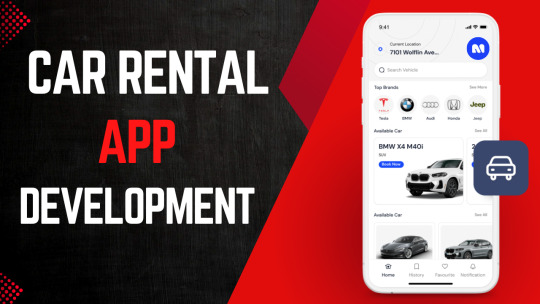
Car rental apps are changing the way people rent cars. Whether for travel, business, or daily use, these apps make it easy to book a vehicle in just a few taps. If you are thinking about building a car rental app, this guide will help you understand the key features needed for success.
Why Car Rental Apps Are Popular
Car rental apps save time and effort. Instead of visiting a rental office, users can book cars online, compare prices, and get their vehicle delivered or picked up. The demand for car rental services is growing fast, making it a great business opportunity.
Types of Car Rental Apps
Self-Drive Rentals – Users rent cars and drive themselves.
Chauffeur Services – Users book a car with a driver.
Peer-to-Peer (P2P) Rentals – Car owners rent out their vehicles.
Corporate Car Rentals – Businesses provide rental cars to employees.
Luxury Car Rentals – High-end cars for special occasions.
Must Have Features of a Car Rental App
For Users:
Easy Sign-Up & Login – Use email, phone number, or social media.
Car Search & Filters – Find cars based on price, type, fuel, and more.
Booking & Scheduling – Choose dates and reserve a car instantly.
Real-Time GPS Tracking – Track the rented car’s location.
Multiple Payment Options – Pay via credit card, wallet, or UPI.
User Reviews & Ratings – Check feedback before renting.
Customer Support – Get help through chat or call.
For Admins:
Dashboard & Reports – Track bookings and earnings.
Car Management – Add or remove vehicles.
User & Driver Management – Manage accounts and documents.
Pricing & Discounts – Set rental prices and offers.
Notifications & Alerts – Send updates to users and drivers.
For Drivers :
Profile & Verification – Register and submit documents.
Booking Requests – Accept or decline rides.
Navigation & Route Guide – Get optimized routes.
Earnings Dashboard – Track income and ride history.
Technology Used in Car Rental Apps
Frontend: React Native, Flutter, Swift, Kotlin
Backend: Node.js, Python, Java
Database: Firebase, PostgreSQL, MongoDB
Hosting: AWS, Google Cloud, Microsoft Azure
Payment Integration: Stripe, PayPal, Razorpay
Navigation: Google Maps API, Mapbox
How Car Rental Apps Make Money
Rental Fees – Users pay based on the rental period.
Subscription Plans – Offer memberships with discounts.
Surge Pricing – Increase prices during peak demand.
Ads & Promotions – Earn from third-party advertisements.
Corporate Partnerships – Tie up with businesses for bulk rentals.
Late Return Fees – Charge extra for late car returns.
Challenges in Car Rental App Development
Challenges in car rental app development include managing bookings, securing user data, setting up payments, creating simple interfaces, handling car fleets, ensuring accurate GPS, adjusting to demand, and following legal rules.
Legal Compliance – Following rules and getting licenses.
Car Maintenance – Managing and servicing rental vehicles.
User Trust & Security – Ensuring safe rentals with verified users.
Standing Out in the Market – Competing with established apps.
Conclusion
A car rental app is a good investment today. With the right features, strong support, and an easy design, you can create an app that attracts customers. Understanding costs and market trends will help you make the best decisions.
0 notes
Text
write for us + software
Are you passionate about write for us + software, software development, programming, or technology? Do you have valuable insights, tutorials, or industry knowledge to share? If so, we invite you to contribute to our platform and become a guest writer!
Why Write for Us?
By contributing to our website, you will: ✅ Gain exposure to a broad tech audience. ✅ Boost your credibility as a software expert. ✅ Earn valuable backlinks to your website or portfolio. ✅ Help developers & tech enthusiasts by sharing your expertise.
Topics We Accept
We welcome high-quality, well-researched, and original articles on:
1. Software Development & Engineering
Best practices in software development.
Coding tips, tricks, and hacks.
Agile, Scrum, and software project management.
2. Programming Languages & Frameworks
Python, Java, JavaScript, C++, and more.
Web development (React, Angular, Vue).
Backend technologies (Node.js, Django, Laravel).
3. Software Testing & QA
Automated testing tools and techniques.
Manual vs. automated testing strategies.
4. AI, Machine Learning & Data Science
AI applications in software.
Data science trends and insights.
5. Cybersecurity & Software Security
Best practices for secure coding.
Protecting software from cyber threats.
6. Software Tools & SaaS Applications
Reviews of software tools and platforms.
Comparisons of SaaS solutions.
7. Cloud Computing & DevOps
AWS, Google Cloud, and Microsoft Azure.
CI/CD, containerization (Docker, Kubernetes).
Submission Guidelines
To ensure quality, please follow these rules: ✅ Original Content – No plagiarism, AI-generated, or republished content. ✅ Word Count – Minimum 1,500 words per article. ✅ Well-Structured – Use proper headings (H1, H2, H3). ✅ SEO Optimized – Include relevant keywords naturally. ✅ Engaging & Informative – Provide real value to readers. ✅ Relevant Images – Add screenshots, infographics, or code snippets.
How to Submit Your Article?
1️⃣ Email us at [Your Email] with the subject “Guest Post Submission – Software”. 2️⃣ Attach your article in Google Doc or Word format. 3️⃣ Include a short author bio (50-100 words) with your website or social links.
What Happens Next?
✔️ Our editorial team reviews submissions within 7 business days. ✔️ If approved, your article will be published with full credit. ✔️ You’ll receive a confirmation email with the live article link.
Join Our Tech Community!
Don’t miss this opportunity to showcase your expertise and contribute to the software development world.
📧 Ready to submit? Send your article to [[email protected]] today!
We look forward to featuring your insights on our platform! 🚀
1 note
·
View note
Text
Show how to extend ADF capabilities with serverless Azure Functions.
Extending Azure Data Factory (ADF) Capabilities with Serverless Azure Functions
Azure Data Factory (ADF) is a powerful data integration service, but sometimes you need additional logic beyond its built-in activities. This is where serverless Azure Functions come in.
By integrating Azure Functions with ADF, you can extend its capabilities to handle complex transformations, custom data processing, and external system interactions.
1. Why Use Azure Functions with ADF?
ADF provides built-in activities for data movement and transformation, but some scenarios require custom processing, such as: ✅ Custom Data Transformations — Processing JSON, XML, or proprietary data formats. ✅ Calling External APIs — Fetching data from web services or third-party APIs. ✅ Triggering External Workflows — Sending notifications or integrating with other Azure services. ✅ Performing Complex Validations — Running business logic before inserting data into a database.
2. Setting Up an Azure Function for ADF
Step 1: Create an Azure Function
1️⃣ Navigate to the Azure Portal → Create a Function App. 2️⃣ Choose Runtime Stack (e.g., Python, C#, Java, Node.js). 3️⃣ Deploy the function using Azure CLI, Visual Studio Code, or GitHub Actions.
Step 2: Write a Sample Azure Function
Here’s an example of an HTTP-triggered Azure Function in Python that transforms JSON data before loading it into a database.import json import azure.functions as funcdef main(req: func.HttpRequest) -> func.HttpResponse: data = req.get_json() # Example: Convert all values to uppercase transformed_data = {key: value.upper() for key, value in data.items()} return func.HttpResponse(json.dumps(transformed_data), mimetype="application/json")
Step 3: Deploy and Obtain the Function URL
Once deployed, copy the Function URL for integration with ADF.
3. Integrating Azure Function with ADF
Step 4: Create an ADF Pipeline
1️⃣ Go to Azure Data Factory → Create a new Pipeline. 2️⃣ Add a Web Activity to call the Azure Function. 3️⃣ Configure the Web Activity:
Method: POST
URL: Paste the Function App URL
Headers: { "Content-Type": "application/json" }
Body: JSON payload required by the function
Step 5: Process the Function Response
Use Data Flow or Copy Activity to store transformed data in Azure Blob Storage, SQL Database, or another destination.
4. Example Use Cases
✅ Dynamic Filename Generation — Generate filenames dynamically before loading files into Azure Blob. ✅ Data Validation Rules — Validate input records before processing in ADF. ✅ Calling Third-Party APIs — Fetch real-time stock prices, weather data, or other external information. ✅ Triggering Notifications — Send alerts via email or Microsoft Teams after data processing.
5. Monitoring and Scaling
Use Application Insights for logging and monitoring function execution.
Scale automatically with consumption-based pricing, reducing infrastructure costs.
Conclusion
By integrating Azure Functions with ADF, you can enhance its capabilities, automate workflows, and handle complex data transformations efficiently.
WEBSITE: https://www.ficusoft.in/azure-data-factory-training-in-chennai/
0 notes
Text
With increasing pace of tough competition at any level, time has become an invaluable commodity when it comes to the Java development. The issues become more crucial when it comes to finding the right Java developer for any particular software. The right person should have extensive knowledge as well as programming skills for the success of the project. Now, with the advent of this service, the task of shortlisting the appropriate techies have become easier and simpler. What Is Tests For Geeks Tests For Geeks is a services which provides an array of programming online tests that covers various programming languages as well as platforms such as Java. Each programming test is devoted to a particular language or platform and is developed by professionals who have comprehensive skillsets, knowledge and experience. It is a fact that the hiring manager or team lead can save a lot of time and effort by testing the knowledge of the potential candidates before shortlisting and conducting the face-to-face interview. Although it should be noted that this test it is not an alternative for live interviews, it enables the HR to save their time by weeding out the wrong candidates at the initial stage. With the reach of the internet, the company can also tap talents overseas easily. Before going further, with the interview, the company can also ensure that the overseas candidate is the right choice. How The Test Is Conducted? The design of the test makes taking tests very easy for team lead to manage the hiring process. All the team lead has to do is to choose the required test, such as Java, generate a unique link and send it to the candidate. After the completion of the test by the candidate, the result becomes available in your inbox. If two or more candidates are slated to give this test, and you want to streamline the process, you can create a permanent link on your website and guide the candidates there. All these candidates have to mention their name and email before starting the test. The company can also apply for a permanent URL on their website so that potential candidates can give the test without HR or team lead participation. They need to intimate their name and email before testing their knowledge and skills in the online test. Details of Java test The Java programming test contains the following topics inside Operators in Java language Collections and Data Structures Reference Types and Value Types Autoboxing and Unboxing OOP (Object Oriented Programming) Patterns: Singleton Exceptions, Threads and Synchronization JPA and Hibernate For Team Leads, HR Managers It is a fact that time is an invaluable commodity for people working in any organization, regardless of the size. With a large number of applications, it is very difficult for any person to interview each candidate only to be disappointed. Also, the time that is wasted can be channeled into other productive work. With this service, the HR person can check the results and discard applicants who are unable to fare well in Java coding when compared to others. Although this testing is not the best substitute for a live interview, it saves precious time by avoiding meetings with unsuitable candidates. Personalization And Branding You can personalize the services of this website by using the company domain and logo while you are in process of hiring the suitable Java candidates. The company offers an unlimited plan with which you can convince the potential candidate that it is an in-house screening service of your company. For Java Developers For the programmers who are looking for a good position at any leading IT company, taking a test at Tests for Geeks is the best move. As the tests at this website are formulated by Java experts who have extensive experience in the industry, the tests represent a valuable benchmark. A test report from this website attached with the candidate’s resume will be a great value addition. This is because the report will demonstrate the software skills, knowledge and expertise of the developer.
0 notes
Text
Understanding Workflow Automation: A Technical Deep Dive
Today, it has become common to see more and more firms engage workflow automation to manage business operations more efficiently and minimize mistakes in their operations. Workflow automation refers to the execution of tasks, forwarding of information, or carrying out processes without human interaction with the use of technology. In addition to speeding up task completion, the automation approach assists in the delivery of consistent and accurate outcomes in a multitude of business functions.
Defining Workflow Automation:
Workflow automation is the software mechanism of using the automatic flow of tasks, documents, and information across work-related activities based on defined business rules. It aims to perform these tasks independently, improving everyday productivity.
Key Components of Workflow Automation Systems:
Process Mapping and Modeling: Before being automated, such workflows need to be mapped as a way to identify areas to improve. Each step, each decision point, and the way information flows would be depicted by detailed diagrams created for this very purpose. A standardized method that tools like BPMN provide includes modeling these processes.
Automation Software: As the heart of workflow automation software, this represents the actual running of predefined actions. The latter can be rather simple task scheduling tools or are complex systems to integrate with an array of different applications and database systems. Two examples include the open-source, Java-based jBPM which is a workflow engine that reads business processes represented in BPMN 2.0.
Integration capabilities: This refers to how smoothly the data moves across the applications, especially to automate data retrieval, update, and synchronize between platforms. These integrations usually come preinstalled in many of the latest workflow automation tools or can be used through connectors and APIs.
User Interface and Experience: The use of a non-technical, user-friendly interface means that end users can easily design, monitor, and manage their workflows. Users will intuitively be able to interact with the automation system by drag-and-drop builders, visual flowcharts, and dashboards without reliance on IT.
Technical Mechanisms Behind Workflow Automation:
Workflow automation functions using a mix of pre-configured rules, triggers, and actions:
Triggers: It means an event or set of circumstances that sets the workflow running. An example might be getting a new email, form submission, or reaching a certain hour in the day.
Conditions: Logical statements that determine the path of the workflow. For instance, if a purchase order is more than a specific amount, then it may need managerial approval.
Actions: The activities carried out in the process. This could include sending notifications, updating databases, or generating reports.
All these components ensure that processes are carried out with precision and efficiency.
Workflow Automation Advanced Concepts
RPA is the use of software to replicate human-like activities within automated systems. While RPA would directly interact at the user level because it works outside of any APIs, using the traditional type of automation depends on APIs.
Artificial Intelligence Integration: Integration of AI in the workflow automation would enable systems to handle unstructured data, take decisions, and learn from patterns. For example, AI may be used in routing incoming emails based on the content analysis for routing them into appropriate departments.
Event-Driven Architecture: This is a design paradigm that handles the production, detection, and reaction to events. The workflow automation event-driven approach ensures systems respond to change in real time, such as changes in the stock level or customer inquiry. This increases agility and responsiveness.
Challenges and Considerations:
While workflow automation offers numerous benefits, it's essential to approach implementation thoughtfully:
Process Optimization: Automating an inefficient process can amplify existing issues. It is very important to optimize workflows before automating them for maximum benefit.
Scalability: With an increase in organizations, the workflow can get complicated. Choosing the right automation tool that scales up with the needs of the organization is necessary to avoid future bottlenecks.
Security: Automated workflows often handle sensitive data. Information will be secure through the means of strong access controls and encryption for the confidentiality and integrity.
Future Trends in Workflow Automation
Workflow automation is changing rapidly:
Hyperautomation is the amalgamation of multiple technologies including RPA, AI, ML, aiming for total automation of the complex business process.
Low Code/No-Code Platforms. Such platforms are empowered to create workflows by end-users with minimum programming skills and therefore democratize automation across an organization.
Intelligent Process Automation: IPA combines the capabilities of AI with RPA to execute even more complex business processes that include decision-making capacities, like fraud detection or handling customer service conversations.
Conclusion:
Workflow automation is basically in the top of technological progress, giving the organization the tool to better its efficiency, accuracy, and adaptability. Based on its technical foundations, businesses will find a way to keep up with the stream of the advance that workflow automation dictates to compete with a fast-changing digital environment.
0 notes
Text
How to Become a Salesforce Developer
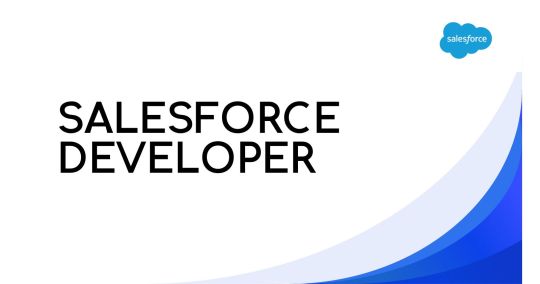
Salesforce is among the most popular customer Relationship Management (CRM) platforms around the globe. It assists businesses in connecting with customers, simplify processes and boost profits. How do you become Salesforce Developer and make use of Salesforce's powerful tools? This article will guide how needed to begin your career as a Salesforce Developer, using simple language that even novices are able to comprehend.
What is a Salesforce Developer?
An Salesforce developer is an expert who specialises in developing custom built applications and features that run on Salesforce. Salesforce platform. They utilize Salesforce's built in features that include Apex (Salesforce's scripting technology) as well as Visualforce (for creating websites) for customizing and improve Salesforce products.
As businesses continue to implement cloud technology Salesforce development is now an essential part of the technology sector. Businesses are seeking people who can adapt Salesforce to their particular requirements. How do you begin on this journey?
Step 1 :- Understand the Basics of Salesforce
Before you begin developing it's essential to be familiar to how to use the Salesforce platform. Salesforce offers a wide range of cloud based services, such as Sales Cloud, Service Cloud, Marketing Cloud and other. Each cloud has distinct options for customization.
There's no need to be a professional at first, but understanding the basics will help when you advance. Begin by studying the following :-
Salesforce CRM Discover Salesforce's important features and how businesses utilize them.
Salesforce Ecosystem :- Explore the various tools that are available within Salesforce. Salesforce platform.
Cloud Computing As Salesforce operates through the cloud, understanding the workings of cloud computing can be beneficial.
Step 2 :- Learn Salesforce Development Tools
Salesforce offers a number of tools for development that are necessary to customize. In order to become a Salesforce Developer you must become familiar using these tools. The most important tools are :-
Apex The Salesforce proprietary language for programming. It's akin to Java and utilized to create software that runs on Salesforce. Salesforce platform.
Visualforce Visualforce provides a platform to build custom user interfaces for Salesforce. The framework is similar in structure to HTML and is frequently employed in conjunction with Apex for pages that can be customized.
Lightning Components Salesforce Lightning an application oriented framework that allows you to create fluid and responsive applications. The process of learning Lightning Components is a great way to remain ahead in the field.
Step 3 :- Get a Hands On Experience Salesforce
One of the best ways to master Salesforce development is to actually using the software. Salesforce has a no cost developer edition which is available to sign up for. The developer edition gives access to the majority of Salesforce features and allows you to play using code and design custom applications.
Begin by making simple apps to test your abilities. Here are some suggestions to start your projects :-
Custom Fields and Objects :- Create custom data models to understand the way Salesforce keeps data.
Triggers Triggers written in the form of a script to perform tasks such as sending emails or modifying the records when certain criteria are fulfilled.
Visualforce Pages Create custom designed pages that are accessible to users of Salesforce. Salesforce platform.
Step 4 :- Learn Apex and Visualforce
Apex as well as Visualforce are the main languages used for Salesforce development. Here are some important points to help you begin :-
Apex :- Learn how to write Apex classes, triggers and testing methods. Apex isn't easy for newbies So make sure to make sure you practice regularly.
Visualforce Discover how to develop custom pages that allow customers to work with the data within Salesforce. Visualforce is like HTML however, it is based on certain Salesforce tag.
There are numerous internet based resources that can aid you in improving your skills with Apex as well as Visualforce.
Also Read this: 6 Salesforce Ecosystem Job Trends 2025
Step 5 :- Get Certified as a Salesforce Developer
Although experience is important although, a certificate can help you stand out from prospective employers. Salesforce offers the Salesforce Certified Platform Developer certification, which proves that you have the capabilities to become an effective Salesforce Developer.
To be able to earn this Salesforce Developer Certification you must pass a test that covers the following subjects:-
Apex programming
Management and modeling of data
Process automation
User interface design using Visualforce and Lightning
To get ready for the test to pass the exam, make use from Salesforce's study material and practice tests.
Step 6 :- Stay Updated and Network
Salesforce is always evolving, with new features and updates being released often. In order to stay in the game, you need to continue to learn. Here's how to keep yourself up to date :-
Get involved in The Salesforce Developer Community Salesforce is home to a huge community online where developers can share their knowledge as well as ask questions. work on their projects together.
Follow Salesforce Forums and Blogs :- There are many forums and blogs devoted to Salesforce development that allow you to learn about the latest developments and best practices.
Participate in Salesforce events :- Salesforce hosts events such as Dreamforce in which you can connect with fellow professionals and get advice about the latest trends in your field from professionals.
If you're active in the community and constantly learning how to keep your skills up to date.
Step 7 :- Apply for Salesforce Developer Jobs
If you're confident about your Salesforce development abilities then it's time to begin applying for job openings. Numerous companies seek Salesforce Developers to customize their CRM system or create custom apps on the platform.
If you are applying for jobs be sure to include :-
Highlight your expertise :- Include your certifications or hands on experience as well as the projects you've worked on.
Create a portfolio of your work :- Showcase your Salesforce development work on platforms like GitHub. This will allow employers to see your capabilities firsthand.
Be prepared for interview :- You should be prepared to discuss your technical abilities as well as your problem solving skills and ways you can help a business's Salesforce configuration.
Conclusion
Being a Salesforce Developer can be an enjoyable career option that offers a wide range of opportunities. Following the steps described in this tutorial and you will be able to begin your journey to becoming a proficient Salesforce Developer. Begin by learning the basics, then gain hands on experience and earn your certification and keep current with the latest advancements within Salesforce. Salesforce ecosystem.
0 notes